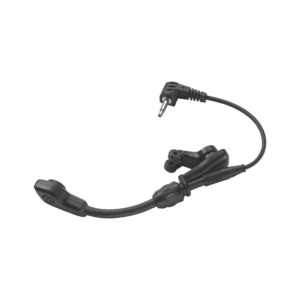From the hospital to the construction site, PPE is essential for maintaining safety and health. Understanding when should PPE be used can quite literally be the difference between life and death.
This article will explore the importance of PPE, delve into the various industries where it’s most needed, and provide a comprehensive answer to the pressing question, “When should PPE be used?”.
Understanding Personal Protective Equipment (PPE)
PPE refers to protective clothing, helmets, goggles, or other garments or equipment designed to protect the wearer’s body from injury or infection. These include a vast array of products designed to protect against different types of hazards: physical, chemical, radiological, electrical, mechanical, or biohazard.
The proper use of PPE effectively reduces the wearer’s exposure to various hazards present in the workplace or general environment.
The Importance of Knowing When Should PPE Be Used
Personal protective equipment (PPE) serves as a formidable barrier between individuals and potential hazards they may face in their environment. However, PPE’s effectiveness depends heavily on its proper use, which, in turn, relies on a clear understanding of when and how it should be employed. Hence, recognizing when PPE should be used is a critical aspect of maintaining safety in numerous settings.
When we ask, “when should PPE be used?”, it’s crucial to understand that the need for PPE extends beyond individual protection. Correct PPE usage can significantly influence the safety of entire communities and workplaces. For instance, in a healthcare setting, it’s not just the health of medical professionals at risk but also the patients they interact with. Similarly, in industries like construction or manufacturing, incorrect or insufficient use of PPE can lead to accidents that jeopardize the safety of the entire site.
The efficient use of PPE is a key component in preventing the spread of infectious diseases. This became vividly clear during the COVID-19 pandemic when the use of masks, gloves, and other forms of PPE played a crucial role in curbing the transmission of the virus.
However, it’s important to recognize that PPE is the last line of defence, a fact often misunderstood. First and foremost, risks should be mitigated through elimination, engineering controls (like adequate ventilation or machine guarding), and administrative controls (like job rotation or proper work practices). PPE comes into play when these controls are not enough to minimize risks.
Understanding when PPE should be used also impacts its conservation and availability. Unnecessary or inappropriate use of PPE can lead to shortages, leaving those who truly need it unprotected. This scenario was witnessed during the height of the COVID-19 pandemic, where a global surge in demand led to a critical shortage of PPE for frontline healthcare workers.
PPE in Healthcare and Medical Fields
Healthcare workers are on the front lines when it comes to potential exposure to various biological hazards. These include bacteria, viruses, and other pathogens that can cause diseases.
Given the nature of their work, healthcare workers are often in close contact with individuals who may be ill or carry infectious diseases. In these cases, PPE, such as face masks, gloves, gowns, and eye protection, becomes essential to prevent the spread of infection.
During surgical procedures, the use of PPE like gloves, gowns, masks, and eye protection helps protect both the patient and the healthcare worker from the transfer of microorganisms, body fluids, and particulate matter.
PPE in Construction and Manufacturing Industries
When one thinks of the construction and manufacturing industries, images of hard hats, safety glasses, and high-visibility vests often come to mind. In these work environments, physical hazards are often abundant, and the potential for injury is high. Falling objects, flying debris, extreme temperatures, and the presence of sharp objects are just a few of the hazards faced by workers in these sectors.
The use of PPE such as hard hats, safety boots, eye protection, and high-visibility clothing can protect workers from many of these hazards. Respiratory PPE, such as dust masks and respirators, can also protect workers from inhaling airborne particles, chemicals, or toxic substances.
PPE in Laboratories
Working in a laboratory often means dealing with chemical hazards. Chemicals can pose a risk through inhalation, skin absorption, ingestion, or contact with the eyes. Lab coats, safety goggles, gloves, and respirators are essential forms of PPE that provide protection against such hazards.
Additionally, certain laboratories also deal with biological hazards. In these instances, additional PPE like face shields and specialized gloves may be necessary for adequate protection.
PPE During Pandemics
During a pandemic, the usage of PPE skyrockets. From healthcare workers to the general public, everyone needs to use PPE to prevent the spread of the virus. Face masks, gloves, face shields, and gowns become part of our daily lives.
These items of PPE protect the wearer from airborne particles and liquid contaminating the face, and can also prevent the spread of infectious materials from the wearer to others.
Conclusion
Understanding when should PPE be used is an essential step in ensuring safety and health across various sectors. Whether it’s in healthcare, construction, laboratories, or during pandemics, PPE plays an indispensable role in protecting individuals from potential risks. The implementation and usage of PPE should be a priority for all, highlighting the significance of prevention.



